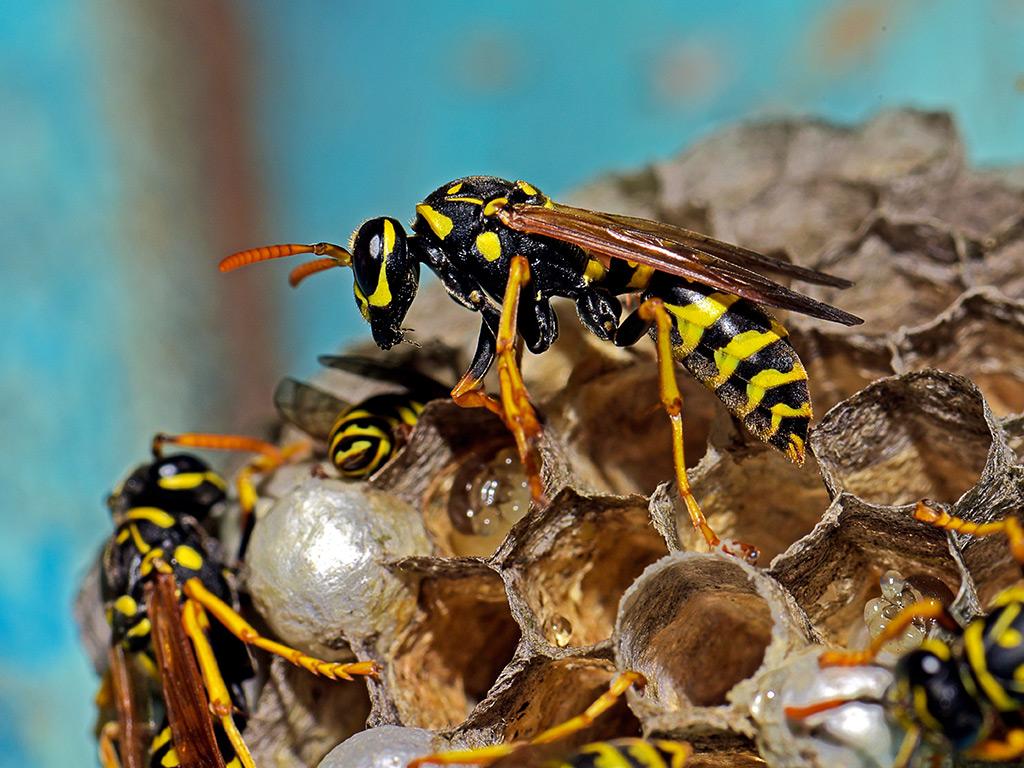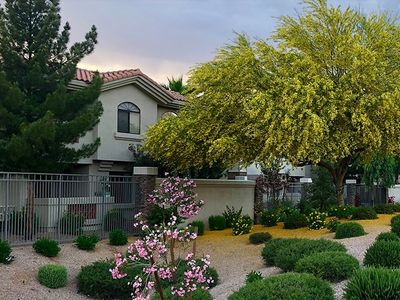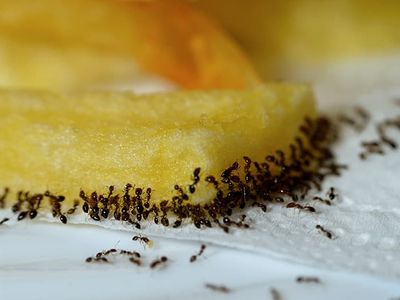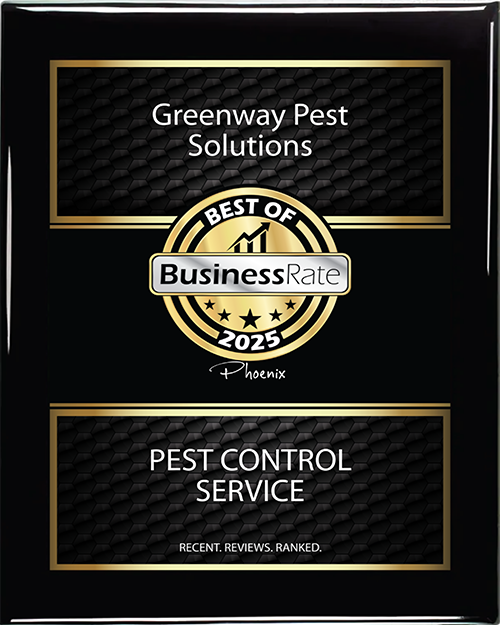What do yellow jackets look like?
Vespula is a genus of social wasps found throughout North America and is commonly known as the yellow jacket. Yellow jackets have narrow waists, and long legs, and their thoraxes have black and yellow markings. They are approximately 1/2 to 1 inch long and are hairless stinging insects that have stingers without barbs.

What does a yellow jacket nest look like?
Yellow jackets construct their nests using wood fibers mixed with saliva. They chew the fibers and turn them into pulp, which they use to make their paper-like nests. Aerial nests are egg-shaped, but nests inside ground holes, wall voids, and other enclosed areas can take on more complex shapes.
Where do yellow jackets nest?
Some yellow jackets create nests on tree boughs or attach them to the sides of man-made structures. These aerial nests are usually visible, but some are hidden when tucked up under rooflines or in bushes, shrubs, and other concealed locations.
Some yellow jackets create nests inside ground holes, logs, and structural voids. They tend to nest in landscaping as vegetation is an attractant for other insects, which these tiny wasps feed on.
Can yellow jackets sting more than once?
Yes. Yellow jackets can sting multiple times. A yellow jacket does not have a barbed stinger, like a honey bee, which is what limits a honey bee from being able to sting more than once.
Are yellow jackets dangerous?
Yes, yellow jackets are considered aggressive and dangerous. They are social wasps that defend their nests and gather into a swarm when threatened. Each wasp can sting multiple times and cause painful, burning wounds.
Some individuals are allergic to stinging insect venom and may experience a dangerous reaction. A normal reaction will result in localized pain, swelling, redness, warmth, and itching. Seek medical attention if you experience coughing, wheezing, trouble breathing, nausea, vomiting, sweating, tightness in the chest or throat, anxiety, or hives.
What should I do if I find a yellow jacket nest?
Caution is warranted around these aggressive pests. If you see a nest on your home, notice wasps hovering around near the ground in your landscaping, or hear a buzzing noise, avoid the area until you have the issue dealt with. We also recommend that you avoid mowing if you have a ground nest. The vibration from your mower may cause the wasps to swarm.
How do I get rid of yellow jackets?
There are many steps required to address most yellow jacket nests. It is best to contact a pest control service provider for nest removal. A professional has protective gear, specialized equipment, and training to deal with yellow jacket nests appropriately. For assistance in Chandler, Gilbert, or elsewhere in the Phoenix metro, contact Greenway Pest Solutions for guidance and yellow jacket control options.
How do I keep yellow jackets away?
Once the nest on your property is removed and your current issue has been addressed, how do you keep those stinging pests away?
- Keep your trash cans covered, avoid overfilling, and get your trash to the curb weekly. Yellow jackets are attracted to the scent of food.
- Address moisture problems, such as clogged gutters. These insects drink from puddles and other water sources on your property.
- Remove logs and wood scraps. Yellow jackets need the wood fibers to establish a nest and will easily create nests on a property that has decaying wood.
- Address lawn weeds. Yellow jackets feed on nectar, and flowering weeds can provide a plentiful source.
- Seal entry points in your exterior. Yellow jackets use these to enter structural voids and create nests in protected spaces.
- Consider a year-round pest control service plan. When you have routine inspections, these painful pests can't sneak up on you.
If you have questions about stinging insect control in Arizona, contact your Greenway Pest Solutions team for assistance.








